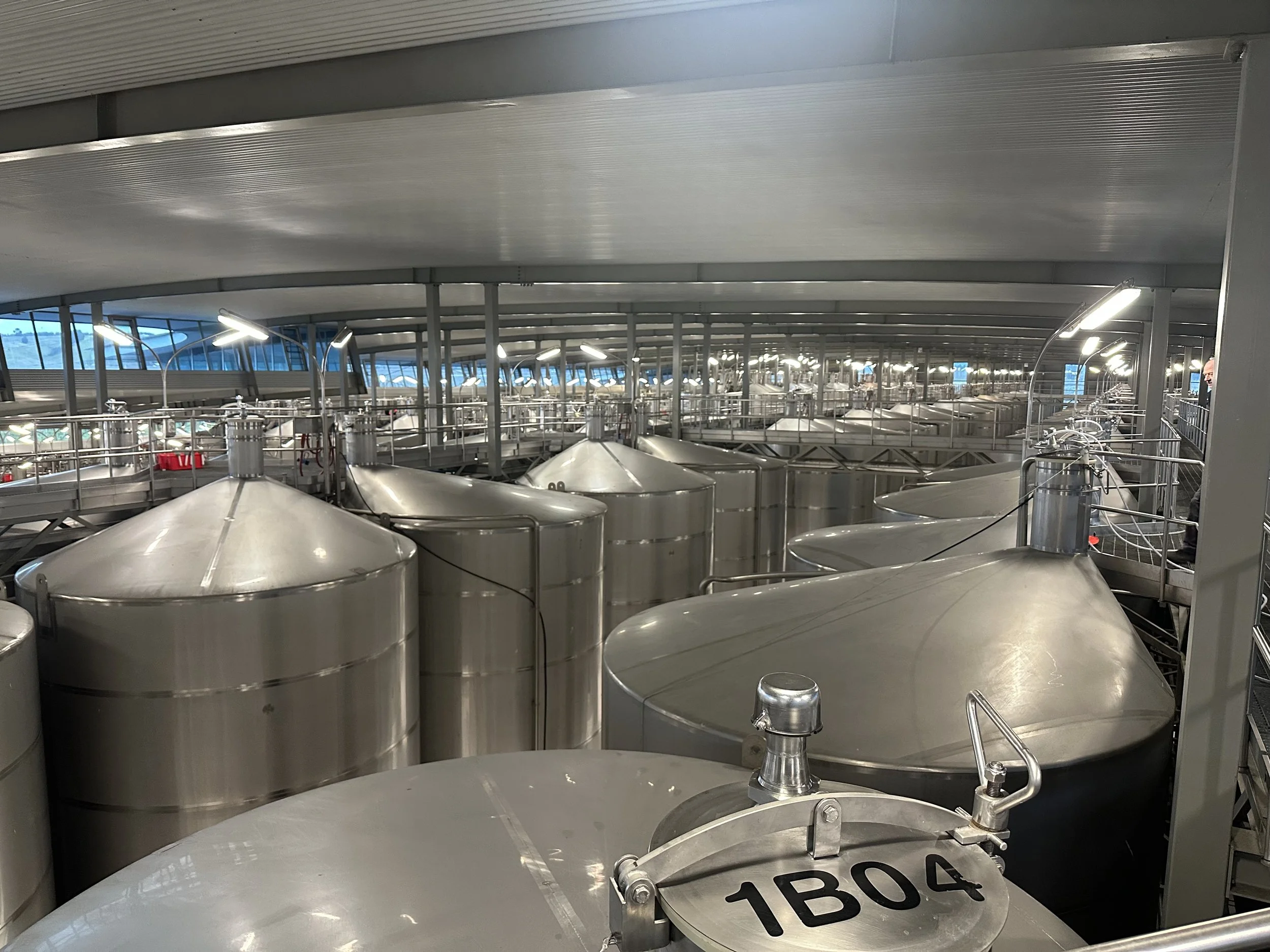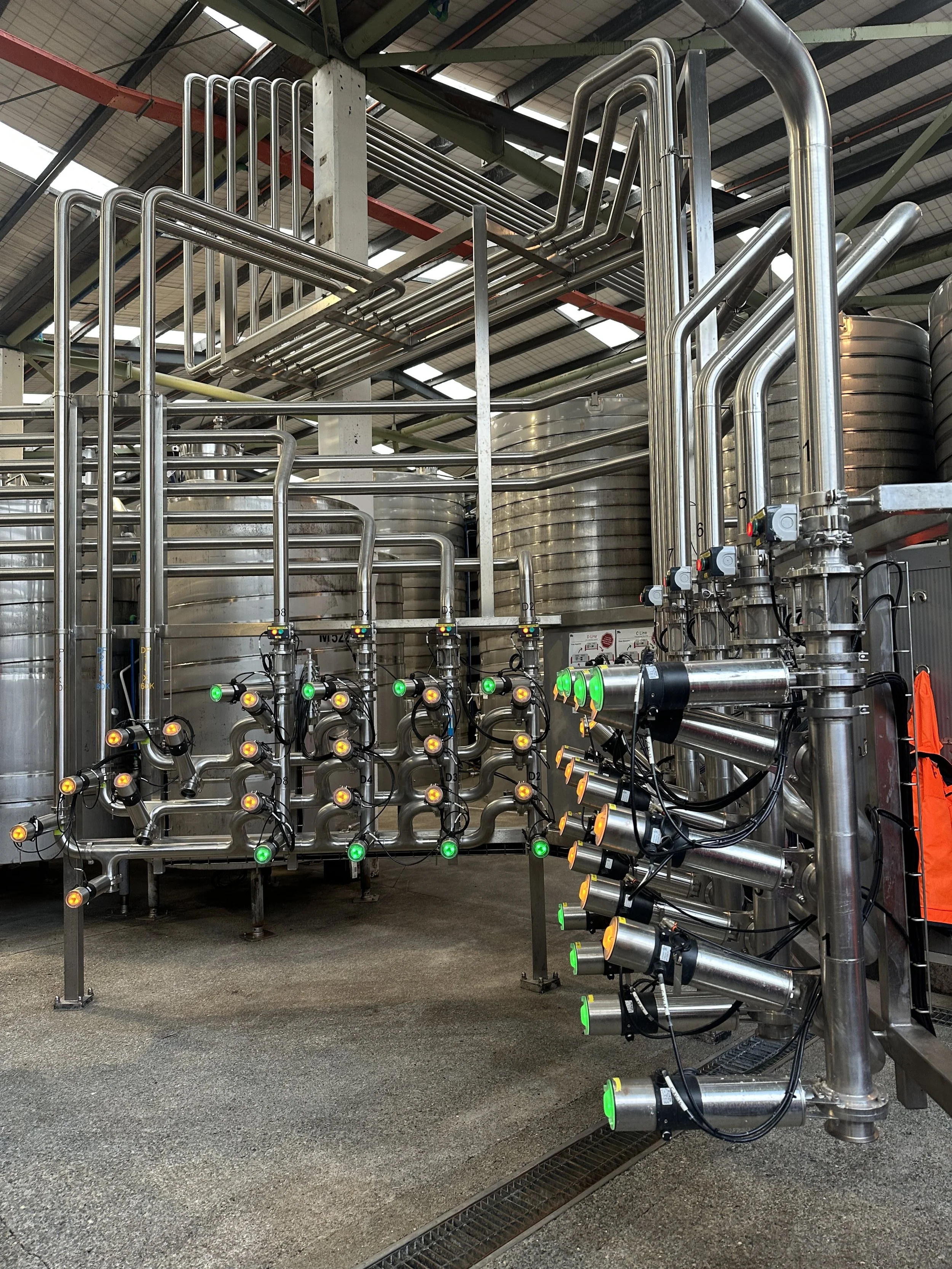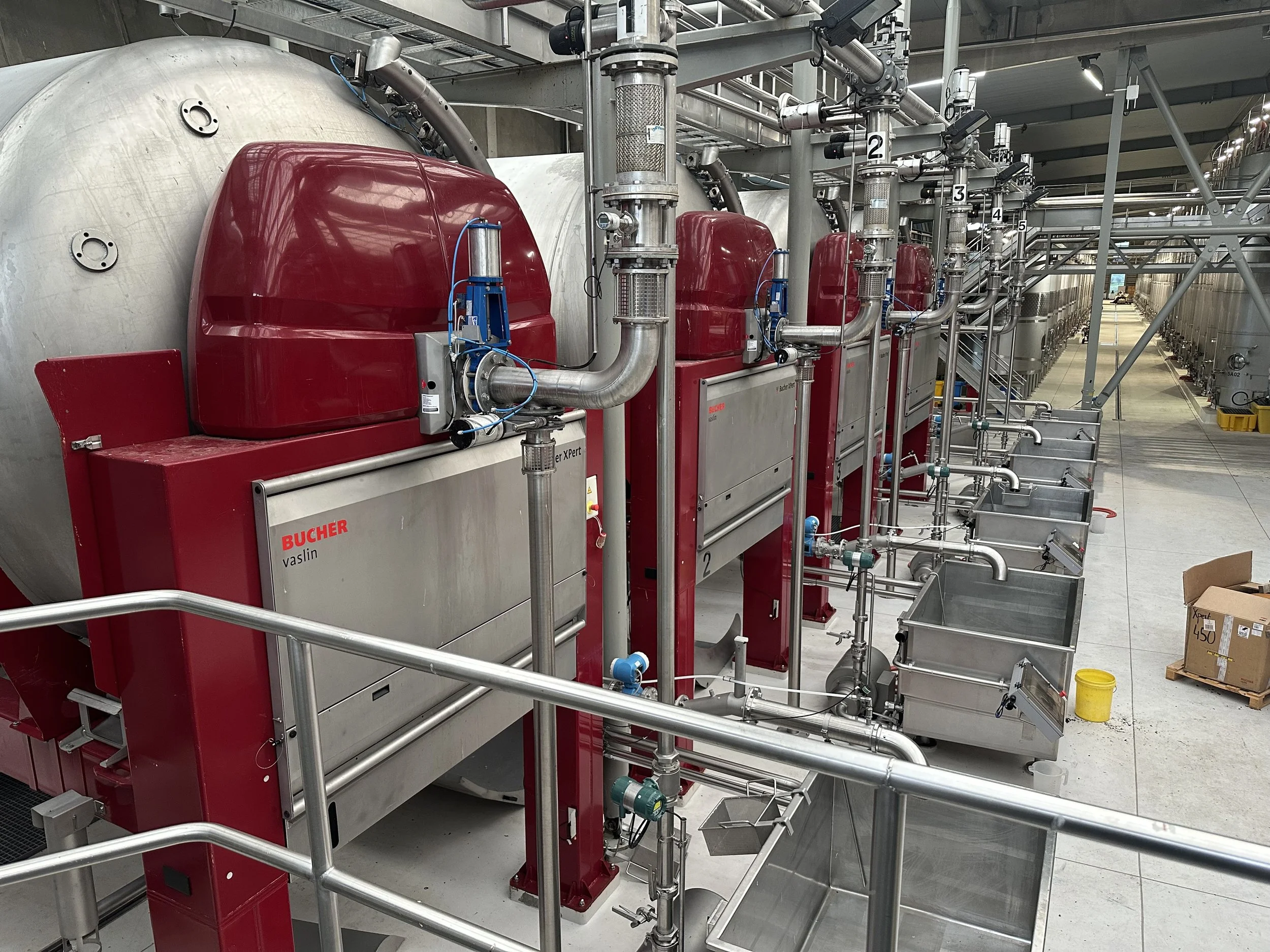Designing winery facilities for scalability, sustainability and smart technology
/With mounting pressure on wineries across Australia and New Zealand to deliver premium wines more sustainably, while navigating a raft of modern-day production challenges such as harvest compression, shifting wine preferences (both in alcohol levels and varietals) and tighter budgets, the question of how best to fit out or upgrade winery facilities has never been more relevant. Whether building from scratch or retrofitting a cherished cellar, careful planning and informed choices can make the difference between a facility that merely copes and one that thrives well into the future. The nature of vinification technologies, wine marketing and the fast-paced landscape of consumer beverage trends, along with social expectations of wine brands, are all influencing the modern winery footprint, layout and technology. Grapegrower & Winemaker sat down with FB*PROPAK managing director Paul Baggio to ask him what he sees as the future directions for fitting out new wineries, and for upgrading existing facilities.
When fitting out a new winery facility, what are the primary layout and equipment considerations that directly affect long-term operational efficiency and future scalability?
A suitable winery design is critical to achieving optimal efficiency and enabling growth. One significant issue in the local wine industry is the extent to which “cookie-cutter” process designs are still applied. The continued use of rotary fermenters, potter drainers and tippy tanks in modern winery designs suggests little regard for the dramatic shifts in wine consumption trends, and limited acknowledgement of the innovations and scientific advances in vinification over recent decades.
Vintage compression has become a common buzzword in winemaking. The most recent harvest brought more than the usual frustrations, as the significant shift in the balance of red to white grape processing in Australia pushed wineries beyond historical norms. This has created considerable challenges for wine quality and operational loads. For example, surging demand for pinot grigio and gris forced many wineries, which were traditionally weighted towards red wine production, into logistical contortions. Because red winemaking is generally more forgiving of harvest compression, these changes highlight the importance of thoughtful, forward- looking winery design.
Modern winery design can be viewed in three parts: the front (grape receival and juice processing), the centre (cellar), and the back end (wine handling and finishing). This flow-oriented approach recognises that winemaking is essentially about the movement of liquid. Over the past decade, winemaking has been defined by better management of solids. The concept of “wholistic winemaking”, coined about 15 years ago, emphasised minimising the creation of solids in the first place. In hindsight, this seems obvious, yet for decades equipment decisions were treated as mutually exclusive process steps. Speak to any engineer replacing RVF with HSXF technology today, and it becomes clear how essential wholistic design and science have become.
If one word encapsulates how far winery design has come, it is “logistics”. Good design must account for how grapes arrive at the receival area. Too often, designs are based on median harvesting capacities or simplistic production flow curves, ignoring the science and technology now available. Heat mapping via drone and satellite imagery, data capture, predictive ripening analysis and AI are all mainstream today. Winery real estate must also consider truck and tray access, traffic management and supply chain efficiency, because logistical bottlenecks can have major consequences for quality and costs. Advances in disease management, vineyard destemming, robotic harvesting and other vineyard innovations are all influencing winery business and brand sustainability messaging - and all point to the need for smarter design.
Valve Matrix Juice Handling
For wineries upgrading existing facilities, what’s the best process for deciding whether to retrofit or replace older equipment - and what are the risks of maintaining outdated systems? Is it realistic to retrofit IoT-enabled equipment and data connectivity to legacy systems?
The decision to retrofit or replace ageing infrastructure has been in debate across the wine trade for generations. The agricultural nature of winemaking has tended to see winery equipment maintained and serviced year to year. The prevalent view is that stainless kit - from front-end receival, de-stemmers, presses - has a long depreciation life past 20 years. It speaks volumes that the most suitable equipment provider should have local service support and lifecycle representation on the ground. Leaning into local mechanical service support expertise has been a critical aspect of wine equipment selection for the Pacific region. Australia and New Zealand’s wine industry plant capital decision- makers often cite that they feel very much the last bus stop along the trail - indicating the nervousness and pressure inherent when deciding which path is most suitable for new investment spend. For this reason, all wine regions from Margaret River, Barossa, MIA, King Valley to Marlborough and Otago have very strong local service support, which winemakers should be partnering with.
It speaks volumes that proactive wine equipment supply companies – Bucher Vaslin, for example - have been running a ‘Retro Fit’ program where presses through to crossflow filters are easily upgraded to modern operating plant, providing a physical transition from obsolescence of the existing installed unit. The benefits include more practical, intuitive features, integrating IoT, lowering breakdowns and overall delivering greater speed and efficacy. Being able to refresh the life of existing capital in this capital-restricted environment does seem a strong feature of that supply relationship. Clinging to outdated systems risks inconsistent product quality, hygiene issues and higher energy use. This has been seen no more strongly than in the movement towards membrane-based technologies such as gas management and membrane tartrate stabilisation. That modern-day winery design can ensure that winery refrigeration cooling rings no longer need to operate at minus -5°C (minus -10°C in some regions) is a significant step towards reducing energy and wastewater volumes, for example.
The strong interconnectivity of winemaking communities in Australia and New Zealand has provided valuable insights into the efficacy and value of what new technology can provide. Visiting wine regions abroad, seeking out winery technology tours, as well as observing the practices of beverage industries such as brewing, juice and water, offers significant learnings. Technologies and processes such as centrifuge clarification, yeast hydration, ED, CIP, through to carbon sequestration and compression, have all been successfully adapted to winemaking.
Yes, IoT sensors and controls can retrofit to existing tanks and pumps, providing better monitoring and maintenance. However, wineries should ensure their network and software infrastructure are capable of supporting digital integration before proceeding.
How do tank specifications influence decisions during a new build versus a retrofit?
The relevance of tank design in winery build is best observed when seeing red wine fermentations occurring in stainless steel tanks that are noticeably designed for white wine vinification, and vice versa. Glycol jackets set insufficiently high up on tank walls to manage the heat that compressed marc caps generate, and circumferential cooling and heating jackets are optimal to manage convection movements within the tank. The diameter of fermentation tanks for red vinification should preferably be wider in design, compared to the narrower diameters typically used for white wine vinification.
Tank selection should reflect winemaking goals as well as the constraints of the building. New builds allow greater freedom to choose optimal materials, such as stainless steel for hygiene and heat exchange efficiency, concrete for thermal mass and micro-oxygenation, or oak for style and finesse. The nature of no-alcohol winemaking is influencing dramatic impacts on winery design, in particular tank design. The irony brought to bear on our wine industry with dealcoholisation is the volumes of spirit alcohol generated. The Dangerous Goods Act and hazardous codes implicate tank design, requiring specified wall thicknesses twice that of usual winery tank specifications. Venting systems and grounding are just some of the additional design aspects that spirit holding will implicate.
Retrofits to the cellar where spiral helicoidal pumps can effect lower solids and less heat-generating turnover compared to centrifugal and similar pumps are design elements - the low-hanging fruit that deliver significant winemaking gains. Modern cooling jackets have improved temperature precision and energy efficiency, but it is the evolution of ‘smart tanks’ and the automation integrated into tank processing that is very exciting. Sensors and automated valves have made it possible to monitor and adjust fermentations remotely, improving consistency and reducing labour.
The ability to carry out cellar activities such as top hatch dosing of SO2 and wine additions, pump-over irrigation, cap plunging, jetting to juice solids and lees management all at ground level improves wine quality and delivers significant cellar labour benefits. That modern tank fabrication provides for vent tubes to be designed in, enabling the harvest of CO2 gas volumes from juice fermentation tanks - and provision for retro-fitting carbon capture technology - reflects the proactivity of tank fabricators to integrate technology across modern winery design.
Bucher Vaslin XPert presses
How can wineries integrate sustainability principles into equipment selection without compromising quality?
Sustainability is now a core expectation, particularly in export markets. Retrofits are an opportunity to embed better practices. Energy-efficient motors, variable-speed drives, water-saving CIP systems, and heat recovery can all reduce environmental impact without compromising reliability. Many wineries now reuse caustic and neutralising solutions, recover water and reduce trade waste. The reduction of chemical additives such as Velcorin, moving towards non-heat pasteurisation, and the use of membrane technology to tartrate-stabilise wines instead of energy-hungry oversized ammonia cooling systems, are all steps that reduce carbon footprint.
The reduction of energy and water use that electro-membrane systems provide compared to the current contact-and-hold processes is another significant step wineries could take. The sequestration of carbon from the winery, its compression and reuse for wine tank handling and packaging would be a further evolutionary step in the sustainability journey for the industry to consider.
Which grape receival and sorting advancements are worth incorporating? Which press technologies are available for handling different grape varieties and batch sizes under time pressure?
Across wineries of all sizes, how grapes are received into the facility directly affects how efficient and fluent production f low will be. From hand- picked fruit to vineyard destemming systems, the grape receiving space must be designed with strong logic and understanding. Logistics, movements of trucks and trays, tractors, forklifts are paramount. Juice left sitting in a bin absorbing polyphenols for hours under the southern hemisphere summer heat is not ideal.
Optical sorting and compact vibrating tables are a significant design feature of the modern receiving space. Optical sorting and vision systems have been used in fruit packing sheds for decades, and are now increasingly commonplace in wineries, having once been viewed as a luxury. These improvements deliver more consistent fruit quality while reducing reliance on scarce skilled labour. Belt conveyors instead of screw augers are also being adopted to reduce solids generation and improve juice yields at scale.
The continual improvement of bag press design - to enable fast axial infeed of grape must, with presses increasing their juice drain screen surface areas, the provision of weight cells and inline monitoring, infeed back-pressure venting systems through to inline membrane juice clarification - is making flotation and cold juice settling increasingly obsolete.
The impacts of winery solids waste and concentrated solids handling generated by f lotation processes have solutions forming on the near horizon. These process solutions will provide future front-end juice and wine flow advantages.
Looking ahead
Australian and New Zealand wineries are entering a challenging yet exciting era, where efficiency, sustainability and innovation must work hand in hand. With careful planning, today’s fit-outs and upgrades can deliver not just better wine, but a stronger bottom line and a more sustainable future.
For more info on how we can implement the latest winemaking equipment and technology at your winery in Australia or New Zealand, please get in touch with our team today.




